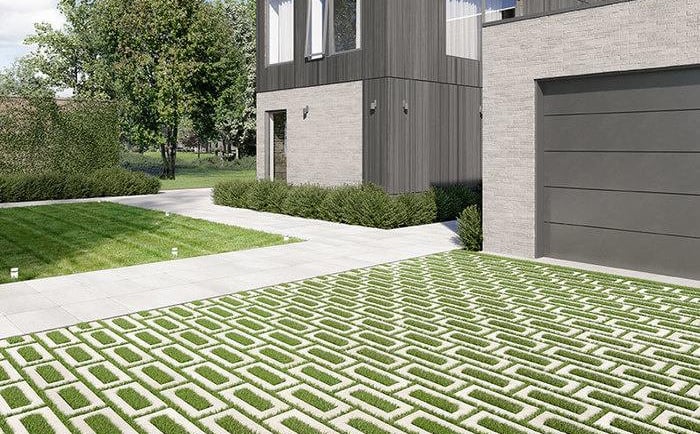Are Interlocking Concrete Pavers Eco-Friendly?
INTERLOCK
7/2/20242 min read


In an era where sustainability and environmental consciousness are paramount, choosing building materials that align with these values is increasingly important. When it comes to landscaping and paving, interlocking concrete pavers have emerged as a popular choice not only for their durability and aesthetic appeal but also for their eco-friendliness. Let’s delve into why interlocking concrete pavers are considered environmentally sustainable and how they contribute to a greener future.
Material Composition and Environmental Impact
Interlocking concrete pavers are typically made from cement, aggregates (like crushed stone and sand), and water. The manufacturing process involves compacting these materials under high pressure, without the need for firing or baking like traditional bricks or clay pavers. This process results in lower energy consumption and emissions compared to other paving materials.
Moreover, concrete pavers are known for their longevity and durability. When properly installed and maintained, they can last for decades, reducing the need for frequent replacements and minimizing waste over time. Their robust nature also means they can withstand varying weather conditions without deteriorating quickly, further enhancing their sustainability credentials.
Permeability and Water Management
One of the significant environmental benefits of interlocking concrete pavers lies in their ability to manage water runoff effectively. Unlike solid concrete or asphalt surfaces that contribute to stormwater runoff, interlocking pavers are designed with narrow joints that allow rainwater to infiltrate into the ground below. This helps replenish groundwater levels and reduces strain on stormwater systems, thus mitigating the risk of flooding and pollution of water bodies with excess runoff.
Recycled and Local Sourcing
Many manufacturers are now incorporating recycled materials into their concrete paver production processes. This includes using crushed concrete or reclaimed aggregates, which reduces the demand for virgin materials and diverts waste from landfills. Additionally, sourcing materials locally whenever possible further reduces transportation-related carbon emissions and supports local economies.
Low Maintenance and Lifecycle Costs
From a sustainability perspective, interlocking concrete pavers offer practical advantages as well. They require minimal maintenance compared to other paving materials such as wood or asphalt. Routine cleaning and occasional resealing are typically all that's needed to keep them looking pristine and functioning well. This reduces the use of harsh chemicals and the environmental impact associated with maintenance activities.
Conclusion
In conclusion, interlocking concrete pavers stand out as a sustainable choice for landscaping and paving projects due to their durability, permeability, use of recycled materials, and low maintenance requirements. By opting for these pavers, homeowners, businesses, and municipalities can contribute to environmental conservation efforts while enjoying the aesthetic appeal and practical benefits they offer.
Whether you're redesigning a driveway, patio, or walkway, choosing interlocking concrete pavers can help you achieve your sustainability goals without compromising on quality or style. Make a green choice today and pave the way to a more eco-friendly future with interlocking concrete pavers


